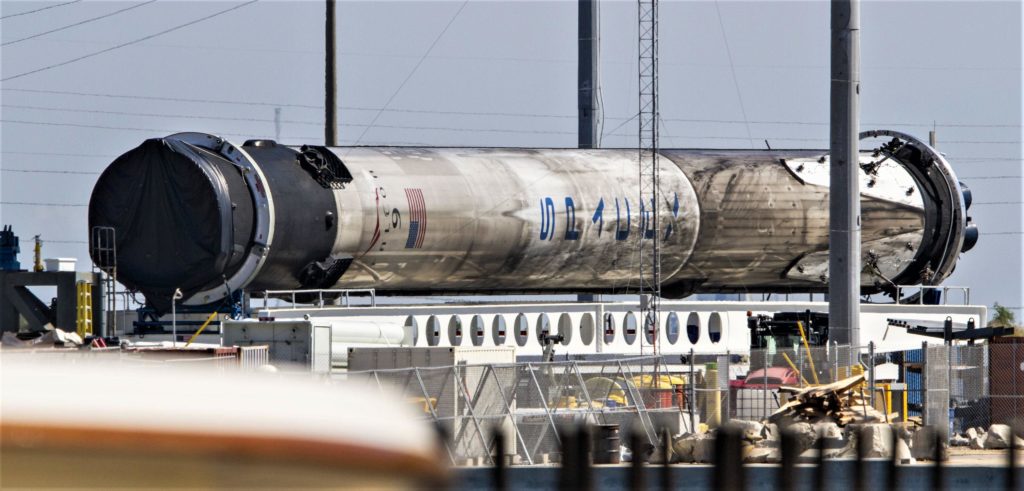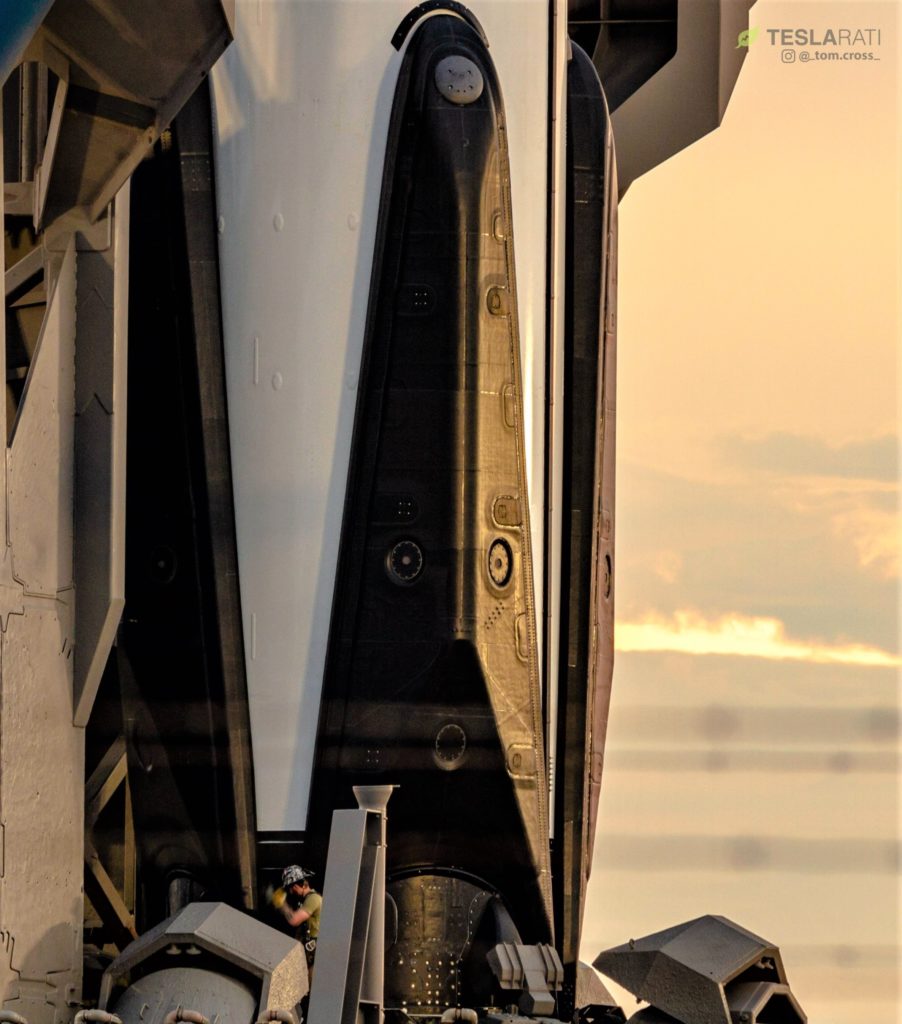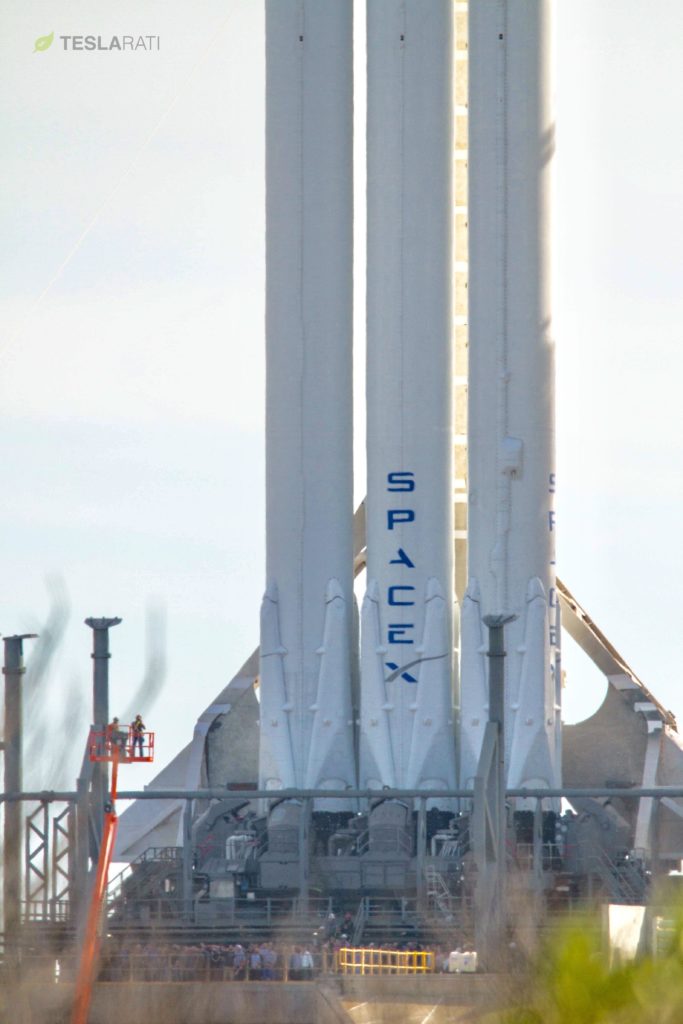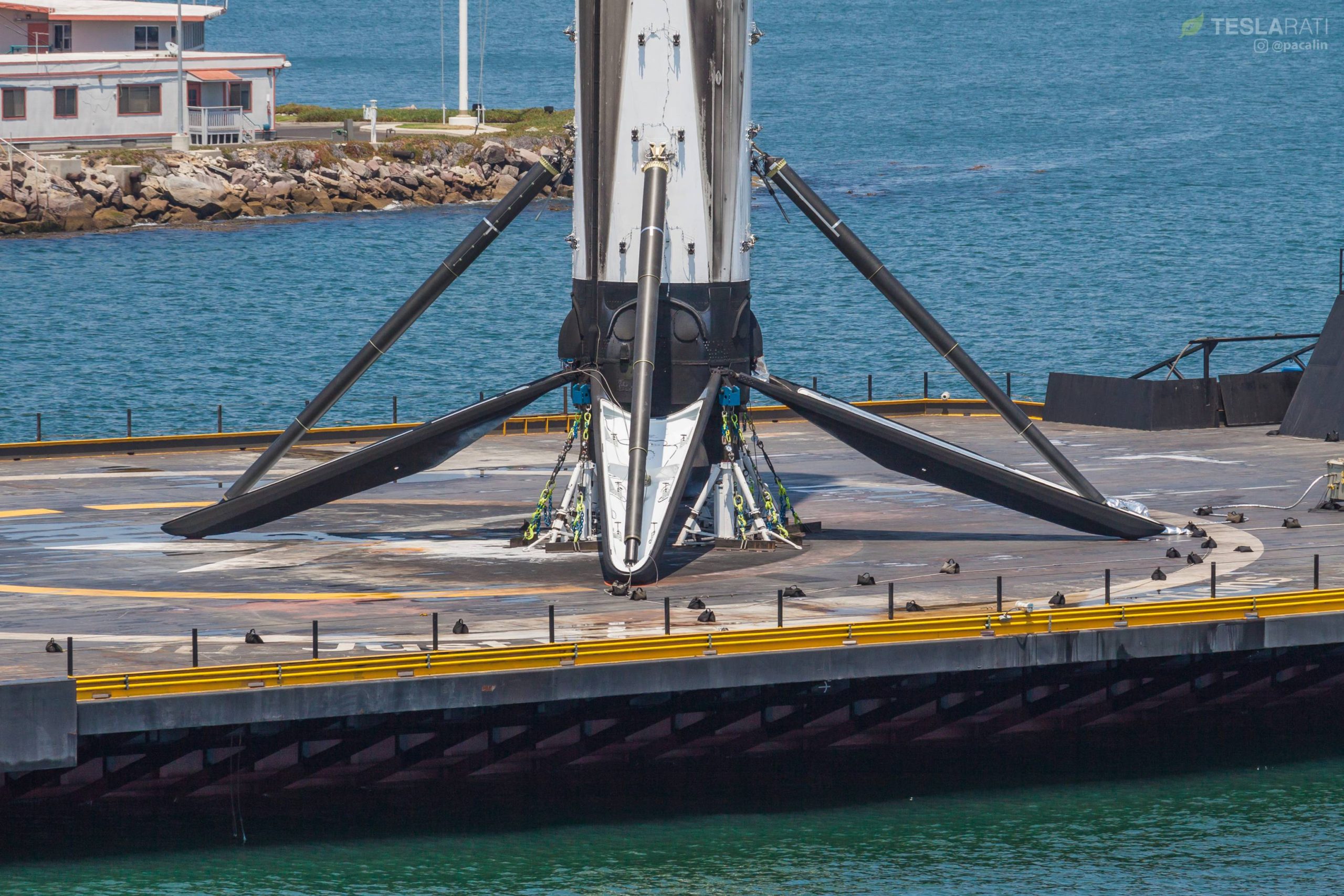
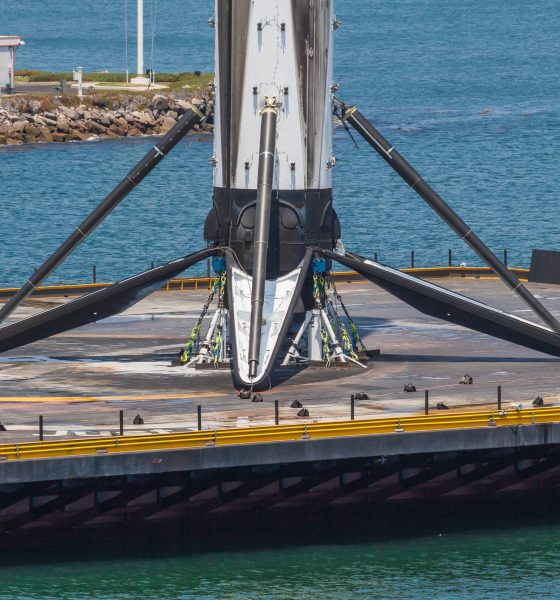
News
SpaceX’s second dedicated USAF mission targets Dec. 2018 for GPS satellite launch
One of a number of 2018 SpaceX missions pushed into this year’s fourth quarter, SpaceX’s second-ever dedicated US Air Force payload is tracking towards a tentative mid-December launch, hopefully kicking off the deployment of the first ten third-generation GPS (Global Positioning System) satellites.
Set to launch the first and second GPS satellites on upgraded Falcon 9 Block 5 rockets, SpaceX and the USAF could potentially decide to fly one or several of the company’s contracted GPS missions on flight-proven boosters.
Air Force reports first GPS III spacecraft — nicknamed “Vespucci” in honor of Italian explorer Amerigo Vespucci — has arrived in Titusville to prepare for December launch on SpaceX Falcon 9. pic.twitter.com/WbJgnyYWgl
— James Dean (@flatoday_jdean) August 22, 2018
Designed and built by Lockheed Martin, each of the first group of a dozen satellites will weigh approximately 3900 kg (8900 lb) and will be placed in a circular orbit 20,000 km (12,500 mi) above Earth’s surface, resulting in one completed orbit every 12 hours. Both as a result of each satellite’s significant mass and orbit requirement and the desire to spread risk over multiple launches, the first eight GPS Block IIIA spacecraft will ride into space on their own dedicated launch vehicles – five aboard Falcon 9, one on a ULA Delta IV, and the rest yet to be determined.
SpaceX’s Falcon 9 was certified to launch national security-sensitive USAF payloads in May 2015 after spending years fighting for the reintroduction of competition into the Department of Defense’s rocket launch procurement apparatus, killed back in the mid-2000s when Lockheed Martin and Boeing merged their space subsidiaries into the United Launch Alliance despite protests from NASA and some in the DoD.
SN Military Space | Air Force wants new GPS in orbit before year’s end • DoD big on OTAs • Space Force by 2020 a long shot – https://t.co/SKTAuJefRy pic.twitter.com/VV0JZi1hFD
— SpaceNews (@SpaceNews_Inc) August 28, 2018
That launch is now aiming for December 15th, 2018, although such a specific date nearly three and a half months out should be treating as purely for planning purposes. Originally planned to launch on a ULA Delta IV rocket, the USAF decided (for unknown reasons) to switch the order of launch, making SpaceX the launch provider for the first and second spacecraft, with ULA following up on the third launch. In March 2018, SpaceX was additionally awarded one more GPS IIIA launch with the option for two more, at a total contract cost of roughly $290 million or ~$97 million apiece. Of the remaining four satellites to be launched after Space Vehicle 06 (SV06) reaches orbit, contracts have yet to be competed, although that process is likely to begin within a year or so.
- It’s currently unclear whether B1046 or B1048 will become the first SpaceX rocket to fly three times. (Tom Cross)
- The second Block 5 booster, B1047, debuted at LC-40 on July 21. (Tom Cross)
- The scale of Falcon Heavy. (Photo: Tom Cross)
Barring any unforeseen developments or anomalies, SpaceX’s December launch of GPS IIIA SV01 ought to kick off a series of Falcon 9 GPS missions every 4-6 months between now and 2021 or 2022. After SV08 is launched sometime in those final years, the US Air Force will open competition slightly further, allowing launch providers SpaceX, ULA, and perhaps even Blue Origin to offer multi-satellite launches on their more powerful rocket offerings, including Falcon Heavy, heavier Atlas 5 variants, and New Glenn.
Beginning in March 2019, largely symbolic but still revolutionary language to be included in 2019’s defense procurement authorization may explicitly require the USAF to explain before Congress – in the event that a launch contract does not allow a reusable rocket to compete – why an expendable launch vehicle was privileged. Currently NET March 2019 as well, SpaceX’s third dedicated USAF launch – STP-2 on Falcon Heavy – is being set up primarily to help the USAF certify SpaceX’s newest heavy-lift rocket for national security launches.
For prompt updates, on-the-ground perspectives, and unique glimpses of SpaceX’s rocket recovery fleet check out our brand new LaunchPad and LandingZone newsletters!

News
Elon Musk’s Grok AI to be used in U.S. War Department’s bespoke AI platform
The partnership aims to provide advanced capabilities to 3 million military and civilian personnel.

The U.S. Department of War announced Monday an agreement with Elon Musk’s xAI to embed the company’s frontier artificial intelligence systems, powered by the Grok family of models, into the department’s bespoke AI platform GenAI.mil.
The partnership aims to provide advanced capabilities to 3 million military and civilian personnel, with initial deployment targeted for early 2026 at Impact Level 5 (IL5) for secure handling of Controlled Unclassified Information.
xAI Integration
As noted by the War Department’s press release, GenAI.mil, its bespoke AI platform, will gain xAI for the Government’s suite of tools, which enable real-time global insights from the X platform for “decisive information advantage.” The rollout builds on xAI’s July launch of products for U.S. government customers, including federal, state, local, and national security use cases.
“Targeted for initial deployment in early 2026, this integration will allow all military and civilian personnel to use xAI’s capabilities at Impact Level 5 (IL5), enabling the secure handling of Controlled Unclassified Information (CUI) in daily workflows. Users will also gain access to real‑time global insights from the X platform, providing War Department personnel with a decisive information advantage,” the Department of War wrote in a press release.
Strategic advantages
The deal marks another step in the Department of War’s efforts to use cutting-edge AI in its operations. xAI, for its part, highlighted that its tools can support administrative tasks at the federal, state and local levels, as well as “critical mission use cases” at the front line of military operations.
“The War Department will continue scaling an AI ecosystem built for speed, security, and decision superiority. Newly IL5-certified capabilities will empower every aspect of the Department’s workforce, turning AI into a daily operational asset. This announcement marks another milestone in America’s AI revolution, and the War Department is driving that momentum forward,” the War Department noted.
News
Tesla FSD (Supervised) v14.2.2 starts rolling out
The update focuses on smoother real-world performance, better obstacle awareness, and precise end-of-trip routing, among other improvements.

Tesla has started rolling out Full Self-Driving (Supervised) v14.2.2, bringing further refinements to its most advanced driver-assist system. The new FSD update focuses on smoother real-world performance, better obstacle awareness, and precise end-of-trip routing, among other improvements.
Key FSD v14.2.2 improvements
As noted by Not a Tesla App, FSD v14.2.2 upgrades the vision encoder neural network with higher resolution features, enhancing detection of emergency vehicles, road obstacles, and human gestures. New Arrival Options let users select preferred drop-off styles, such as Parking Lot, Street, Driveway, Parking Garage, or Curbside, with the navigation pin automatically adjusting to the user’s ideal spot for precision.
Other additions include pulling over for emergency vehicles, real-time vision-based detours for blocked roads, improved gate and debris handling, and extreme Speed Profiles for customized driving styles. Reliability gains cover fault recovery, residue alerts on the windshield, and automatic narrow-field camera washing for new 2026 Model Y units.
FSD v14.2.2 also boosts unprotected turns, lane changes, cut-ins, and school bus scenarios, among other things. Tesla also noted that users’ FSD statistics will be saved under Controls > Autopilot, which should help drivers easily view how much they are using FSD in their daily drives.
Key FSD v14.2.2 release notes
Full Self-Driving (Supervised) v14.2.2 includes:
- Upgraded the neural network vision encoder, leveraging higher resolution features to further improve scenarios like handling emergency vehicles, obstacles on the road, and human gestures.
- Added Arrival Options for you to select where FSD should park: in a Parking Lot, on the Street, in a Driveway, in a Parking Garage, or at the Curbside.
- Added handling to pull over or yield for emergency vehicles (e.g. police cars, fire trucks, ambulances).
- Added navigation and routing into the vision-based neural network for real-time handling of blocked roads and detours.
- Added additional Speed Profile to further customize driving style preference.
- Improved handling for static and dynamic gates.
- Improved offsetting for road debris (e.g. tires, tree branches, boxes).
- Improve handling of several scenarios, including unprotected turns, lane changes, vehicle cut-ins, and school buses.
- Improved FSD’s ability to manage system faults and recover smoothly from degraded operation for enhanced reliability.
- Added alerting for residue build-up on interior windshield that may impact front camera visibility. If affected, visit Service for cleaning!
- Added automatic narrow field washing to provide rapid and efficient front camera self-cleaning, and optimize aerodynamics wash at higher vehicle speed.
- Camera visibility can lead to increased attention monitoring sensitivity.
Upcoming Improvements:
- Overall smoothness and sentience.
- Parking spot selection and parking quality.
News
Tesla is not sparing any expense in ensuring the Cybercab is safe
Images shared by the longtime watcher showed 16 Cybercab prototypes parked near Giga Texas’ dedicated crash test facility.

The Tesla Cybercab could very well be the safest taxi on the road when it is released and deployed for public use. This was, at least, hinted at by the intensive safety tests that Tesla seems to be putting the autonomous two-seater through at its Giga Texas crash test facility.
Intensive crash tests
As per recent images from longtime Giga Texas watcher and drone operator Joe Tegtmeyer, Tesla seems to be very busy crash testing Cybercab units. Images shared by the longtime watcher showed 16 Cybercab prototypes parked near Giga Texas’ dedicated crash test facility just before the holidays.
Tegtmeyer’s aerial photos showed the prototypes clustered outside the factory’s testing building. Some uncovered Cybercabs showed notable damage and one even had its airbags engaged. With Cybercab production expected to start in about 130 days, it appears that Tesla is very busy ensuring that its autonomous two-seater ends up becoming the safest taxi on public roads.
Prioritizing safety
With no human driver controls, the Cybercab demands exceptional active and passive safety systems to protect occupants in any scenario. Considering Tesla’s reputation, it is then understandable that the company seems to be sparing no expense in ensuring that the Cybercab is as safe as possible.
Tesla’s focus on safety was recently highlighted when the Cybertruck achieved a Top Safety Pick+ rating from the Insurance Institute for Highway Safety (IIHS). This was a notable victory for the Cybertruck as critics have long claimed that the vehicle will be one of, if not the, most unsafe truck on the road due to its appearance. The vehicle’s Top Safety Pick+ rating, if any, simply proved that Tesla never neglects to make its cars as safe as possible, and that definitely includes the Cybercab.
